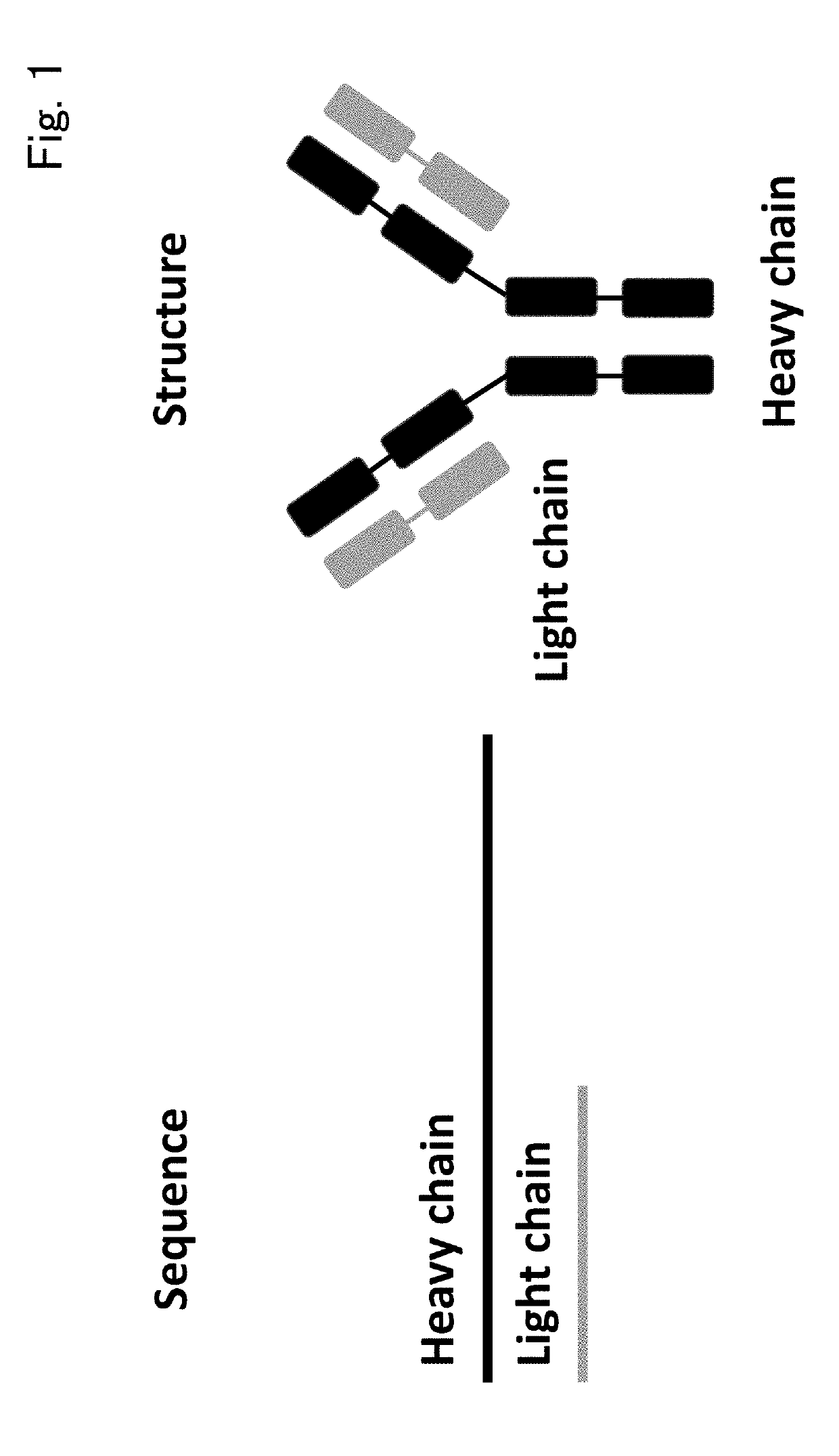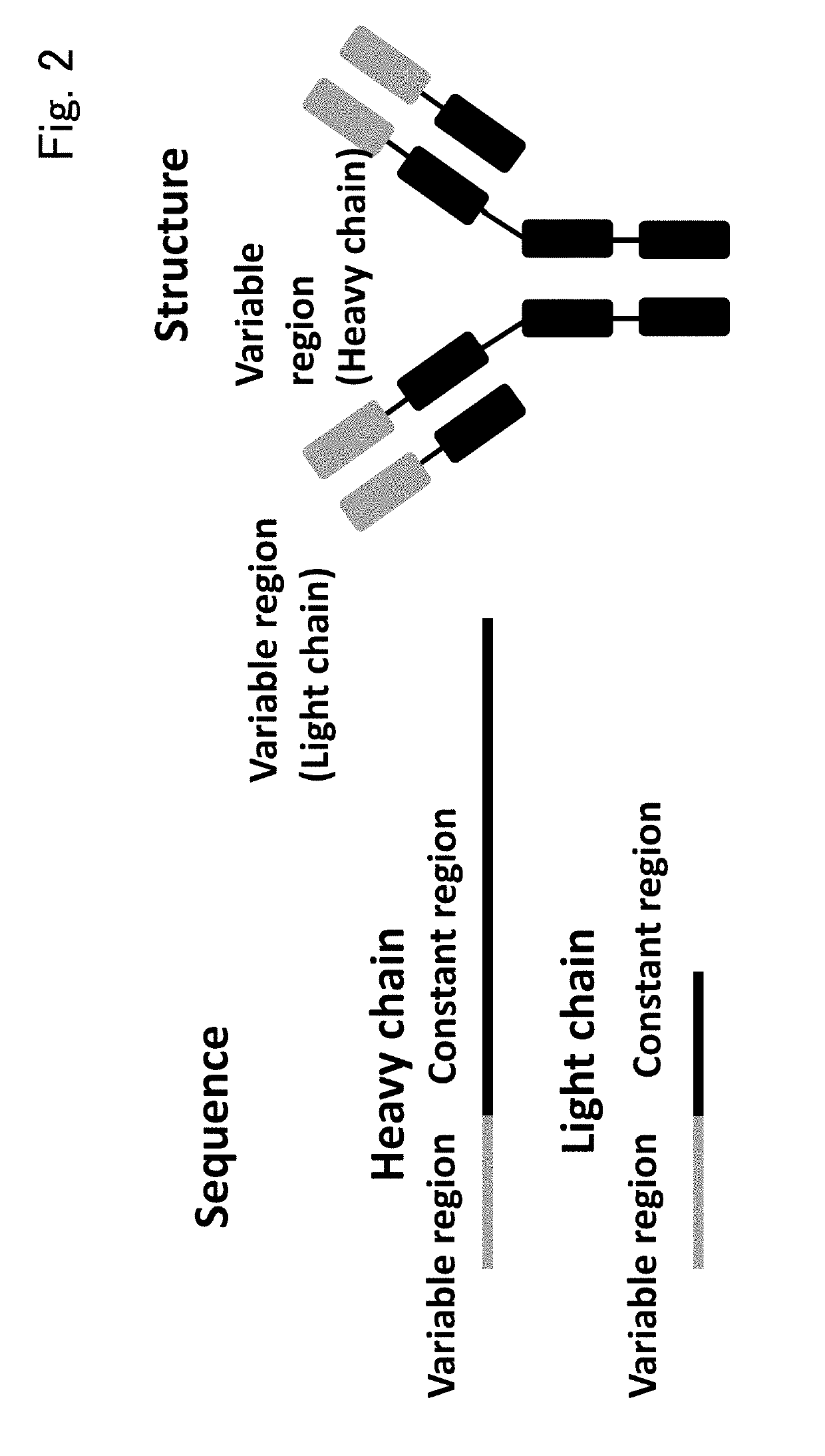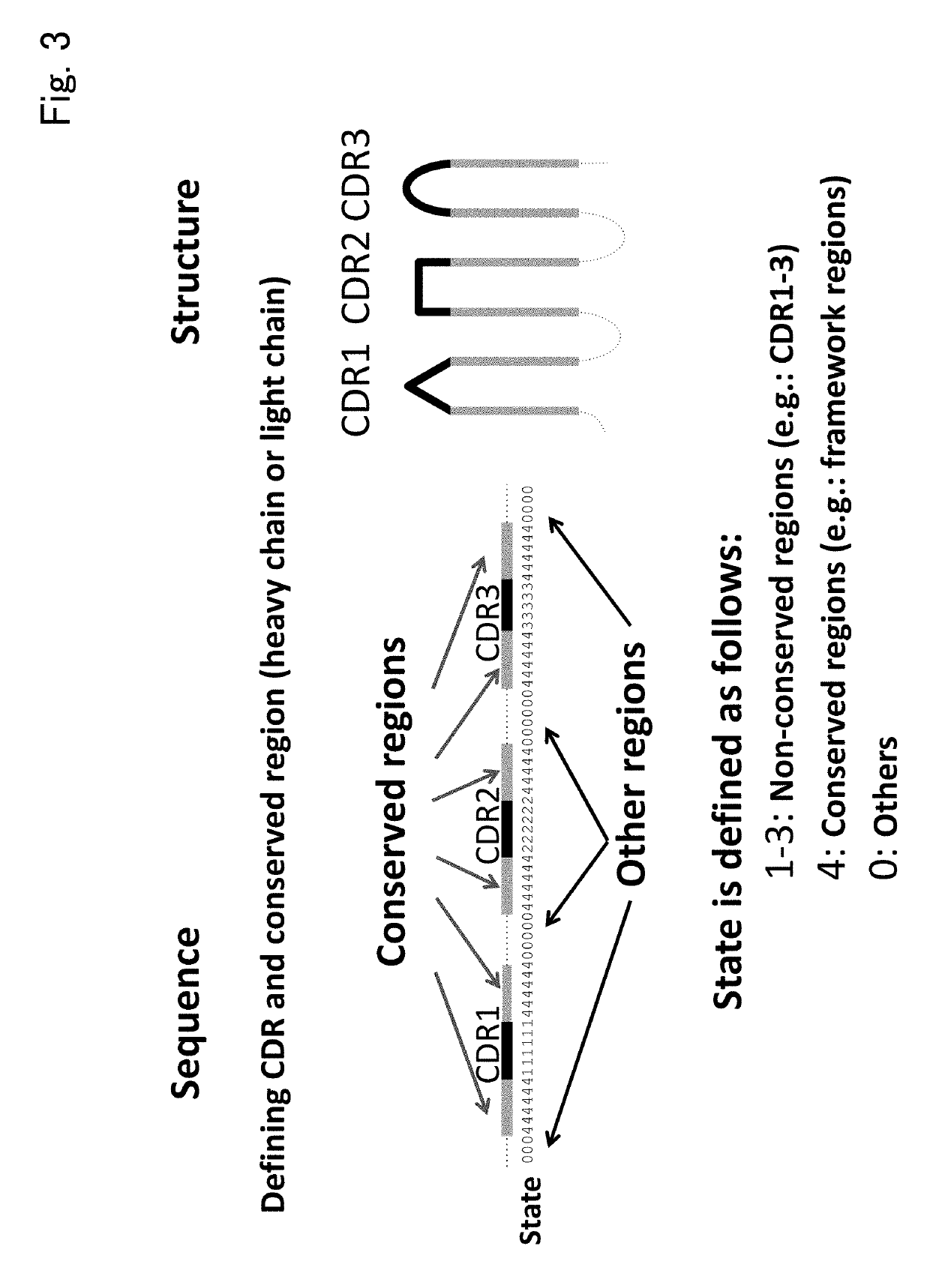Immunological entity clustering software
a software and immune system technology, applied in the field of immune system clustering software, can solve the problems of difficult comparison of antibodies, especially antibodies produced by different individuals, by an antigen or epitope, and the identification of antigens and epitopes that bind to such antibodies or tcrs, and achieves high resolution/high accuracy information, facilitate downstream analysis, and reduce cost
- Summary
- Abstract
- Description
- Claims
- Application Information
AI Technical Summary
Benefits of technology
Problems solved by technology
Method used
Image
Examples
example 1
sing an HIV Antibody
[0219]This Examples shows that an anti-HIV antibody can be clustered by epitopes even when there are a very large amount of non-anti-HIV antibodies by using the methodology proposed herein.
[0220]This Example first selected out human derived antibody-antigen complexes that are peptides with an antigen length of 6 residues or more from structures registered in PDB (Protein Data Bank) and then reviewed the following two data sets.
[0221](HIV Sets)
[0222]270 human derived anti-HIV antibodies were obtained from the PDB database. The names of the antibodies are listed below (In the Table, the first 4 digits indicate the PDB ID, 5th to 7th digits indicate heavy chain, light chain, and antigen chain IDs, respectively).
TABLE 1-11n0xHLP3h3pIMT5cinHLP3macHLA4olxHLG5a8hRQM1n0xKMR3idgBAC1g9mHLG3ngbBCA4olyHLG5acoGJC1q1jHLP3idjBAC1g9nHLG3ngbEFD4olzHLG5acoHLA1q1jIMQ3idmBAC1gc1HLG3ngbHLG4om0HLG5acoIKD1tjgHLP3idnBAC1rzjHLG3ngbJKI4om1HLG5c0sHLA1tjhHLP3mlrHLP1rzkHLG3p30HLA4p9hHLG5c7kA...
example 2
f Mapping NGS Data to Cluster Based on PDB Data Constructed in Example 1
[0246]This Example uses the cluster based on PDB database constructed in Example 1 to map NGS data and examine the prediction accuracy of the present invention.
[0247]The SVM constructed in Example 1 is applied without changing a parameter or the like to an antibody sequence (NGS antibody sequence) obtained by a single cell next generation sequencing (e.g., Tan et al., Clinical Immunology, 2014, 151, 55) of several 10s B cells with an unknown antigen from peripheral blood obtained from HIV positive donors . Application without any change indicates that consistent SVM can be applied or SVM created previously based only on existing data can be applied to new data, and indicates that SVM was created in Example 1 using data that is sufficient for classifying data of Example 2. The SVM created in Example 1 indicates that correct clustering can be performed on data for which the user does not known the answer. This is...
example 3
ation of Amplified Cluster after Vaccination
[0250]This Example identifies an amplified cluster after vaccination. Data described in Wiley et al., Science Trans. Med. 2011, 93, 1 is applied for the data thereof.
[0251]A host animal such as a BALB / c mouse (available from CHARLES RIVER LABORATORIES JAPAN, INC. and the like) is immunized with an antigen of a malaria parasite (Plasmodium vivax). Upon immunization with this antigen, the animal is immunized separately or concomitantly with various adjuvants (suitable amount of GLA-SE available from IDRI or R848-SE available from 3M Pharmaceuticals (e.g., 20 μg)). The mouse is immunized again on week 3 and week 6 after immunization by the same immunization procedure as the first immunization in accordance with a standard immunization procedure. A blood sample is obtained after 7 weeks from the first immunization. A blood sample is similarly obtained from a BALB / c mouse that has not been immunized.
[0252]These antibody heavy chain sequences ar...
PUM
 Login to View More
Login to View More Abstract
Description
Claims
Application Information
 Login to View More
Login to View More - R&D
- Intellectual Property
- Life Sciences
- Materials
- Tech Scout
- Unparalleled Data Quality
- Higher Quality Content
- 60% Fewer Hallucinations
Browse by: Latest US Patents, China's latest patents, Technical Efficacy Thesaurus, Application Domain, Technology Topic, Popular Technical Reports.
© 2025 PatSnap. All rights reserved.Legal|Privacy policy|Modern Slavery Act Transparency Statement|Sitemap|About US| Contact US: help@patsnap.com



